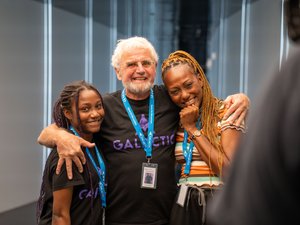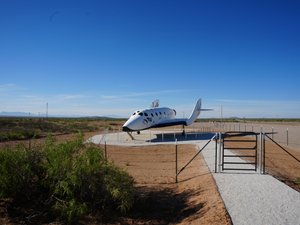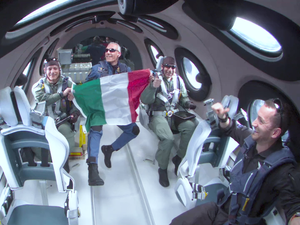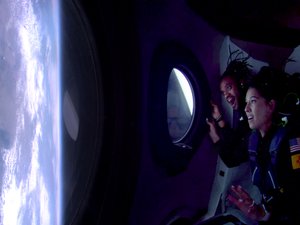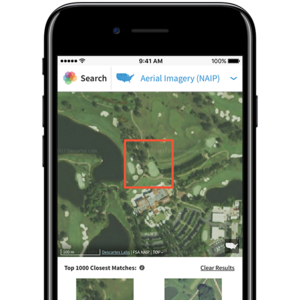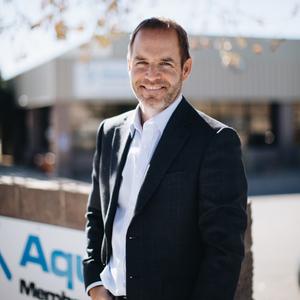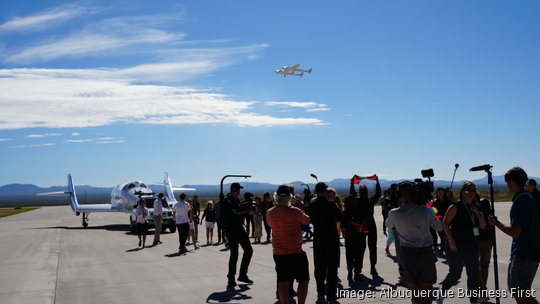
Virgin Galactic sent a crew of private astronaut passengers into space from New Mexico's Spaceport America Thursday morning for the first time in the space tourism company's near 20-year history.
A gaggle of media inside Virgin Galactic's "Gateway to Space" hangar — the centerpiece building at Spaceport America located about 25 miles southeast of Truth or Consequences — and onlookers outside the Spaceport's security fence peered up through clear morning skies as VSS Unity, Virgin's spaceship, carried a four-person crew nearly 55 miles above the southern New Mexico desert.
On board VSS Unity were three passengers — Jon Goodwin, Keisha Schahaff and Anastasia Mayers — and Beth Moses, Virgin Galactic's lead astronaut instructor. The spaceship took off from the Spaceport at 8:30 a.m. It was carried by VMS Eve, Virgin's "mothership," up to around 45,000 feet before VSS Unity released at 9:17 a.m. and rocketed into zero gravity.
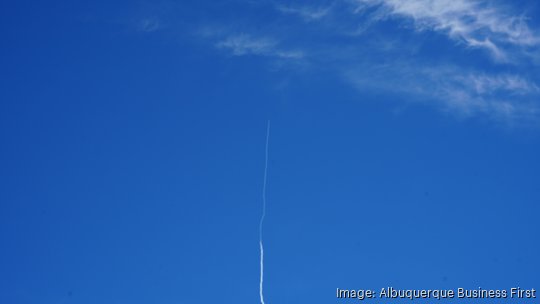
One minute and 30 seconds later, the four-person crew was in zero gravity — a shot upwards from 45,000 feet to over 250,000 feet above the Earth in a couple of minutes. Unity spent about three minutes in zero gravity as the crew unlatched from their seats and floated around the spaceship's cabin. Then, through instruction from Unity's pilots C.J. Sturckow and Kelly Latimer, the crew buckled back in and began the glide back down to Spaceport America.
The approximately 250 people on hand at the "Gateway to Space" building pointed their eyes upwards as VSS Unity descended, catching brief glimpses of the ship as it moved through the sparse clouds scattered throughout the sky. Then, at 9:32 a.m., Unity touched back down at the Spaceport and came to a full stop on the spaceport's 12,000-foot horizontal runway.
The private astronaut mission, dubbed "Galactic 02," lasted just over 90 minutes. VSS Unity hit a peak altitude of 290,000 feet, or just under 55 miles, and a max speed of Mach 3, or three times the speed of sound, during the flight.
"Galactic 02, safe and sound," Moses, the lead astronaut instructor, said outside the "Gateway to Space" building minutes after the ship touched down.
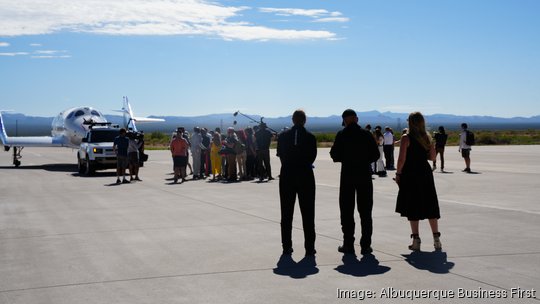
Thursday's flight marked the biggest milestone for Virgin Galactic, a company that's long-time goal has been to make commercial space travel more easily accessible to passengers willing to dish out hefty sums for a seat on board VSS Unity. It costs $450,000 for a seat, although tickets are currently only available through Virtuoso, a luxury and experiential travel company, as Virgin works through an 800-person backlog of reservations.
It's the third time Virgin Galactic has flown people into space over the past four months following a final test mission called "Unity 25" on May 25 and a research mission dubbed "Galactic 01" with a four-person crew featuring two Italian Air Force officers and an Italian researcher on June 29.

"It was far more dramatic than I imagined it would be," Jon Goodwin, an 80-year-old member of the "Galactic 02" crew with Parkinson's disease who competed in the 1972 Munich Olympic games, said during a noontime press conference after the flight. "The pure acceleration — Mach 3 in eight-and-a-half seconds — was completely surreal.
"The reentry was a lot more dramatic than I imagined it would be," he continued. "In fact, I would have said it was out of control if I didn't know anything different. But it was a completely surreal experience. … It was, without a doubt, the most exciting day of my life."
Keisha Schahaff and Anastasia Mayers, a mother-daughter team from Antigua and Barbuda, were also crewmembers on board VSS Unity. Members of the media and other people from the Caribbean nation were at Spaceport America to watch their two country peoples' flight into space.
"We have to go beyond our fears," Schahaff said during the press conference. "We have so much big dreams, a lot of times we are afraid to even voice it because it's too big and we don't want to be shut down by our dreams. But it is okay to dream big, and it is okay to voice your dreams."
"As someone so young, I definitely do understand where a lot of the self-doubt comes from," 18-year-old Mayers said. "But as my mom said, everyone's dreams are valid and there is always a possibility for them to come through."
The two are the first mother-daughter duo to fly into space, according to Virgin Galactic, and Mayers is the youngest person to fly into space, according to the company.
"Today Virgin Galactic took another historic leap forward by flying our first private astronaut mission and demonstrating how our spaceflights will broaden access to space," Michael Colglazier, the company's CEO, said in a statement after the flight. "Jon, Keisha and Ana each embody our fundamental belief that space is for everyone, and we are proud that today's flight has inspired people and communities around the world.
"This is just the beginning, as we plan to continue flying monthly spaceflights while also developing our Delta Class production spaceships to scale our business," Colglazier's continued.
Doug Ahrens, Virgin Galactic's chief financial officer, said during the company's second-quarter earnings call Aug. 1 that it expects five more spaceflights out of Spaceport America before the end of the year. The next of those, which would be the space tourism company's third commercial mission, is planned for September, according to Thursday's Virgin Galactic news release.
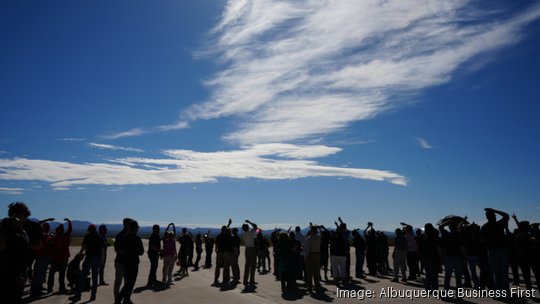
This story was updated Thursday evening with more details from the flight and additional comments from crewmembers and Virgin Galactic executives.
This story was updated to correct the title of Virgin Galactic's chief financial officer, Doug Ahrens, and the spelling of Anastasia Mayer's last name.
